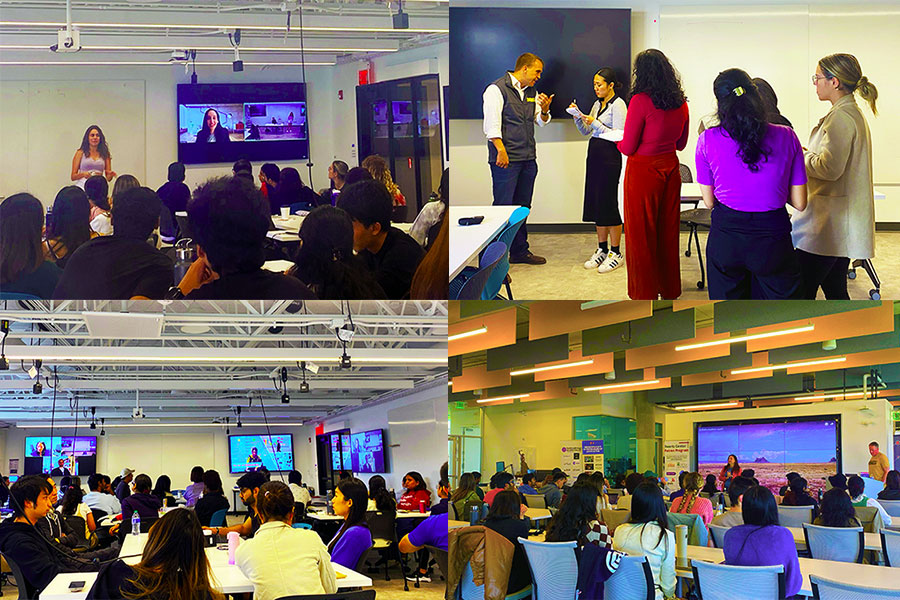
MIIPS Students Engage with Industry Leaders in Weekly Seminar
By Jess Ignasky
The iii seminar series is a recurring course that meets throughout the fall and spring semesters, giving students exposure to various industry leaders in innovation and product development. Guest speakers offer a combination of talks, activities, advice, hands-on skill sessions, and general Q&A sessions to share their expertise.
Check out the stories below to learn more about the 2023-2024 guest speakers.
Dida Atassi
Adam Paulisick
Garima Swaroop
Gregor Stodtmeister
Dave Mawhinney
Dida Atassi,
Managing Director, Design Co-Lead Middle East, Accenture Song
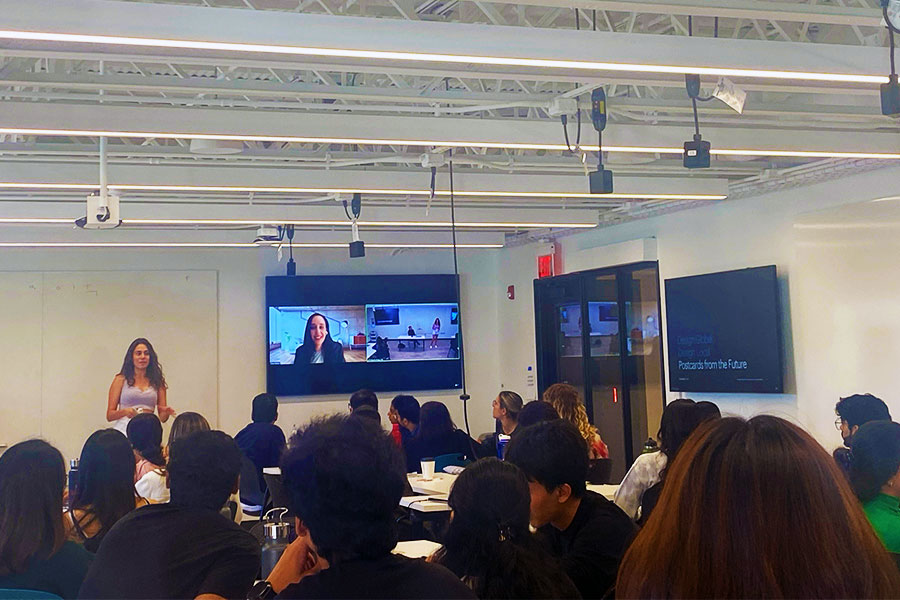
Dida Atassi, Design Co-Lead of the Middle East for Accenture Song joined virtually to speak about her role at Accenture Song and answer student questions related to product design, user research, and more.
During her presentation, Dida spoke about the tools she utilizes at Accenture Song in her role. These included using a life-centric design framework to create sustained relevance for end-users and using a deep simplicity philosophy to make users’ lives simpler and more rewarding.
Students were intrigued by the idea of turning complex designs into simple concepts; with many engineering students in the program, this concept is not one they have learned before. Dida relayed the importance of utilizing cross-functional teams, dissecting the problem by using post-its, rebuilding a flow, and then creating working prototypes that are iterated based on customer feedback.
Dida also stressed the importance of user research and doing pure research starting a design, being able to communicate clearly with both clients and team members, and how her team organizes a collaborative feedback process.
Adam Paulisick,
Founder & CEO of maad labs
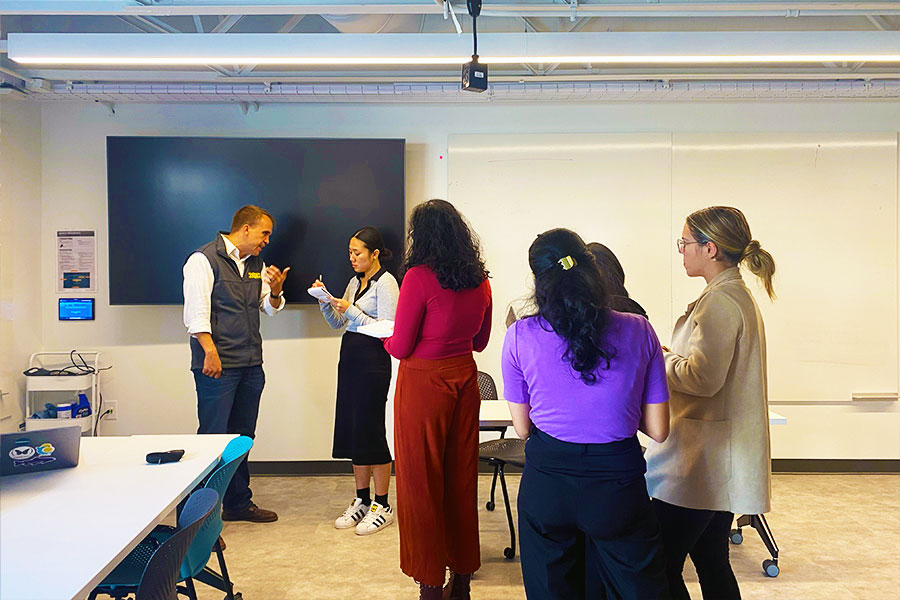
Adam Paulisick, founder & CEO of maad labs, visited MIIPS students to speak about his experience as a serial entrepreneur and his role in AI Design.
During his presentation, Adam shared what he looks for when interviewing people for roles. He spoke about the importance of being a high-agency person; someone who is confident, dependable, and efficient (just one way of defining this type of person!)
Adam also spoke to the class about AI and AI Design, persuading other members of a company or team to adopt a new idea, and shared a framework called Resolution Pyramids for designing AI and AI product managers.
Adam then encouraged students to do an exercise called the "20-10-10 Method.” This method invites a person to inventory things they can most advocate for to build their personal brand, better understand themselves, and apply for roles/companies that better suit their interests.
Learn more about the 20-10-10 method here.
Garima Swaroop,
Vice President of Product Strategy at Goldman Sachs Corporate Treasury Division
Gregor Stodtmeister,
Product Manager at Double Verify
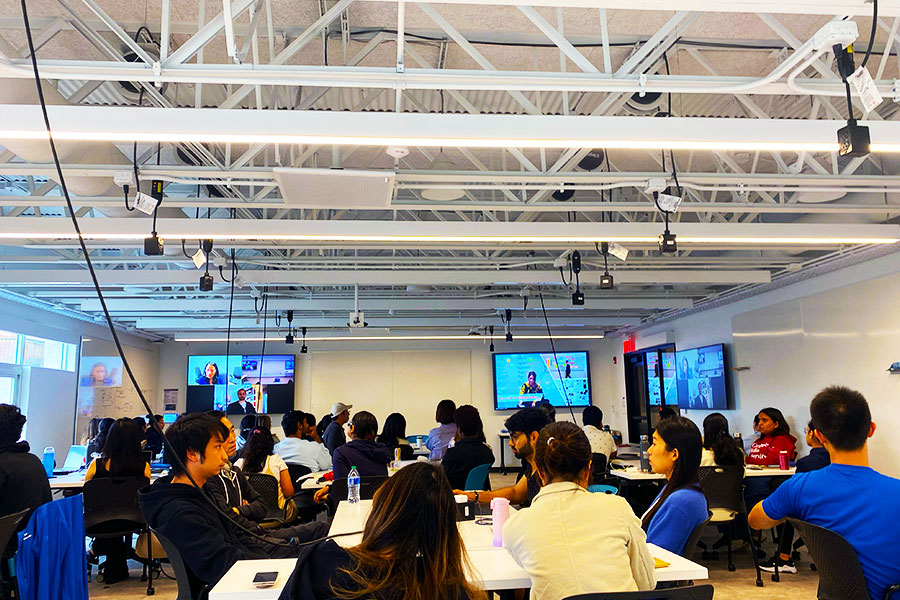
Garima Swaroop, Vice President of Product Strategy at Goldman Sachs Corporate Treasury Division (MIIPS ‘16), and Gregor Stodtmeister, Product Manager at Double Verify (MIIPS ‘16) joined the seminar virtually to share their advice for progressing through the MIIPS program as alumni.
At the start of their presentation, Garima and Gregor spoke to students about their time in the MIIPS program, sharing helpful tips they wish they had known when they first began the program. They shared the importance of whiteboarding for projects, the importance of looking outside of coursework to apply learnings (ex: competing in competitions), and the importance of multi-phase prototyping.
Garima and Gregor also spoke to the importance of maintaining relationships built in the program to help in their professional lives. Garima shared a story of how she was asked to do some design work at Goldman Sachs as a non-designer. Despite not having a design background, Garima was able to call up a classmate who led UX teams and bounce some ideas off of them for how to best set herself up for her project.
To round out the presentation, Gregor shared a case study about how he used tools learned in MIIPS as a real-life application to form a problem statement to help improve a product. He spoke about design thinking and the design squiggle - the design process is sometimes messy but being comfortable in ambiguity will help things even out at the end! Gregor shared additional learnings and takeaways from the case study including the importance of a strongly defined problem statement, learning how to influence stakeholders, and being able to argue your thinking in design.
Dave Mawhinney,
Executive Director, Swartz Center for Entrepreneurship
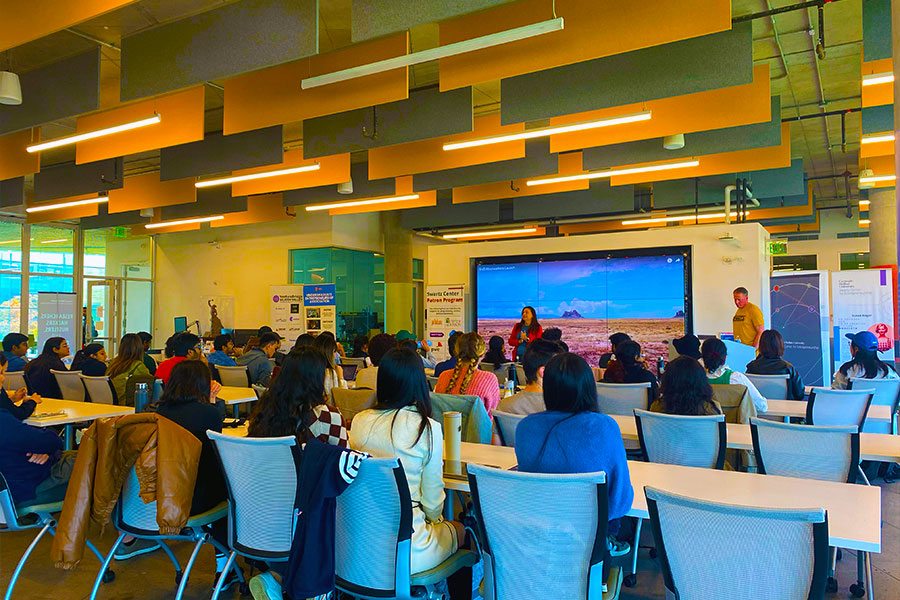
Students visited the Swartz Center for Entrepreneurship to meet with Dave Mawhinney, Executive Director at the Swartz Center for Entrepreneurship. He spoke about the many facets the Center offers to students at CMU.
Dave stressed the importance of interdisciplinary education and collaboration at CMU, sharing how the first supercomputer on campus was placed in the basement of the business school.
Dave also shared the history of entrepreneurship at CMU and how many students and alumni have gone on to create products and services with ties to large companies. For example, Matt Rogers, who helped create the first four iPhones and later founded Nest, was an engineering undergrad at CMU.
Lindsay Hickey,
Senior Director of Marketing, Onborad Robotics
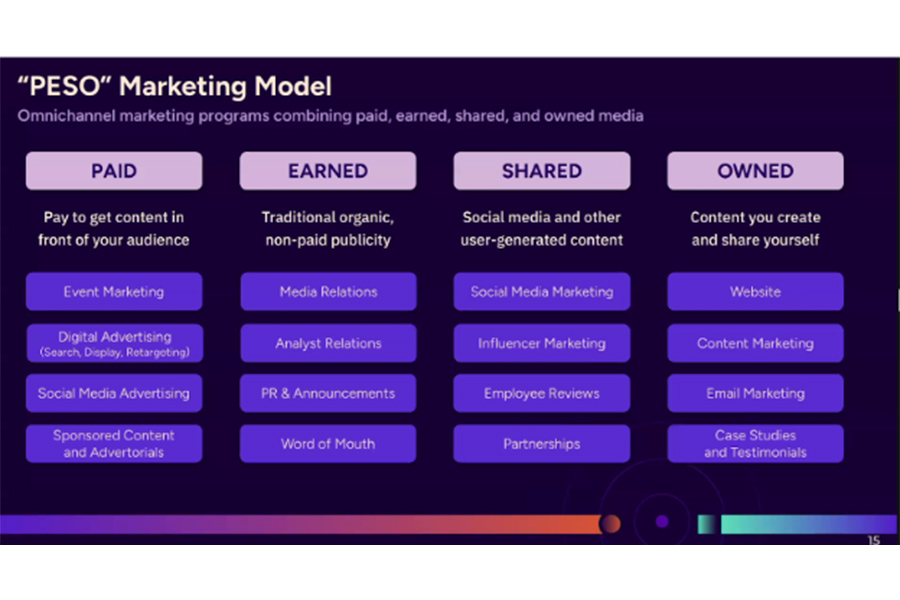
Lindsay Hickey, Senior Director of Marketing at Onboard Robotics visited MIIPS students to speak about her experience marketing robotics solutions over more than ten years at different organizations in the industry.
During her presentation, Lindsay recounted her time spent previously at Seegrid and now at Onward Robotics, discussed how she championed a complete rebrand at Onward Robotics, expressed the importance of buyer personas, and how she leverages the PESO marketing model in her everyday work.
She stressed the importance of a marketing team maintaining a close partnership with product, engineering and supply chain teams at an organization to ensure key features and messages are being communicated to the customer.
Students asked thoughtful questions around marketing channel mix and how to differentiate your message to cater to different buyer personas.
Ben Ostrowski,
Senior People Researcher, Atlassian
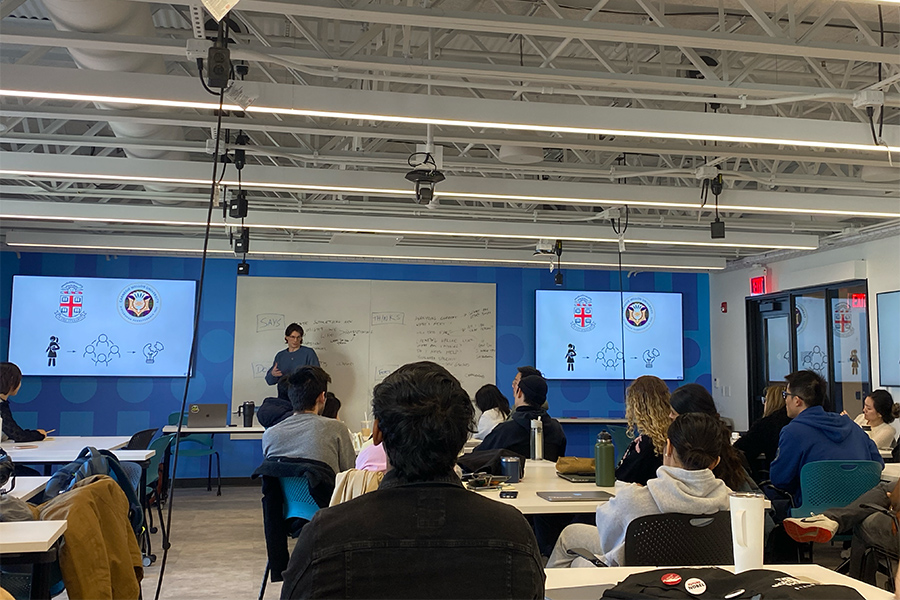
Ben Ostrowski, Ph.D., Senior People Researcher at Atlassian visited MIIPS students to speak about his studies in organizational behavior and his predictions for what the future of work will look like.
In his presentation, Ben spoke about his current role at Atlassian where he combines skills of experimentation, data science, and project management alongside learning designers, content designers, data scientists, and organizational leaders in his work.
Ben and the students then had a conversation about what the future of work might look like. Ben predicts that the future of work will be more distributed and teams will not be explicitly co-located on a daily basis. He also predicts that work will become more flexible; not in just how we work, but where we work. Lastly, he shared that he hopes work will become more equitable in the future.
Nikolas Martelaro,
Assistant Professor, Human-Computer Interaction Institute
Nikolas Martelaro, Assistant Professor at the Human-Computer Interaction Institute, visited the MIIPS seminar to speak about how prototyping can help creators observe and prototype interactions in the wild.
During his presentation, Nikolas shared his perspective on usecases for prototypes including building to see, observing and prototyping interaction, and building to act.
Nikolas shared a case study with students about a project he worked on with automatic driving cars alongside Renault, Nissan Alliance, and Cornell Tech. In this case, a user sat in the automatic driving car and was prompted questions about their experience, answering in real time about how they were feeling and what they were focusing on. Nikolas shared that this form of prototyping was useful to bring in the human perspective and experience of the automatic driving car to help designers build better tech.
Lindsay Wade,
Associate Director of Experience Strategy at Deloitte Digital
Lindsay Wade, Associate Director of Experience Strategy at Deloitte Digital, visited the MIIPS seminar to speak about experience strategy and her role at Deloitte.
During her presentation, Lindsay gave students some background about her career path. She spoke about her nonlinear experience and how it led her to roles in design, advertising, and ultimately to Deloitte and her current role in experience strategy. Lindsay shared some context on experience strategy and how she uses generative audience research, workshop design and facilitation, frameworks, and more to “turn ambition into action.”
Lindsay presented students with two case studies related to experience strategy: the first, “Work in the Wild” focused on how she helped an architecture firm reimagine the University of Utah’s Applied Sciences Center. The second case study was about creating a digital experience for basketball fans in the Metaverse using the feature-design prioritization process to create and strengthen community through storytelling.
Tom Murray,
Director of Product Management at First Insight
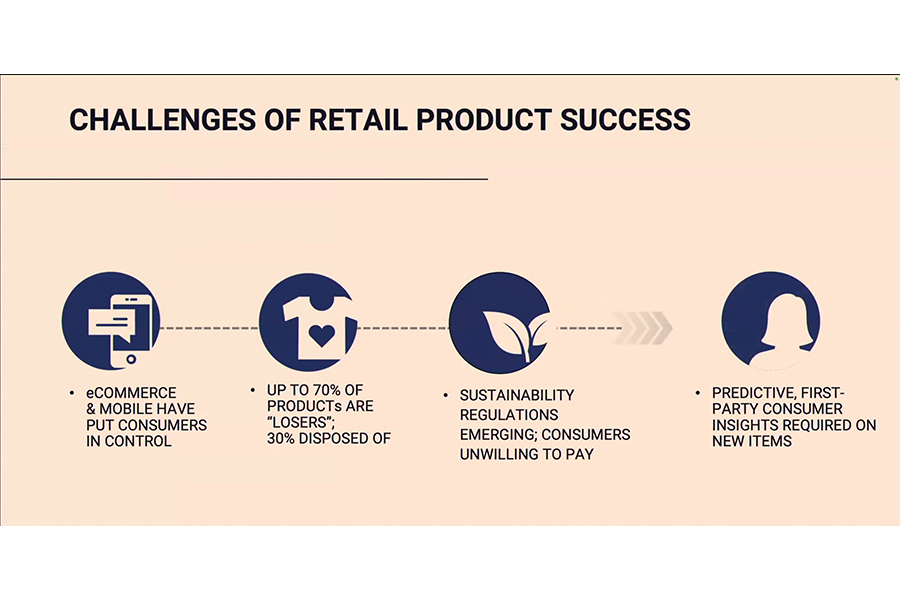
Tom Murray, Director of Product Management at First Insight visited the MIIPS seminar to speak about his work in predictive analytics.
Predictive analytics is a tool that helps retailers and brands identify which products will be most successful in the next season. Predictive analytics can be utilized under experience management platforms that provide various services to automate the process of identifying and improving experiences across an organization.
Tom spoke about different types of experience management platforms and how they operate, identifying the differences in how they present predictive analytics. Tom also spoke about experience management platform functions, how his company, First Insight, differentiates itself, and how brands can go a step further in using predictive analytics to speak directly to consumers.
Dimi Apostolopoulos,
Senior Systems Scientist at the Robotics Institute of Carnegie Mellon University and the National Robotics Engineering Center (NREC)
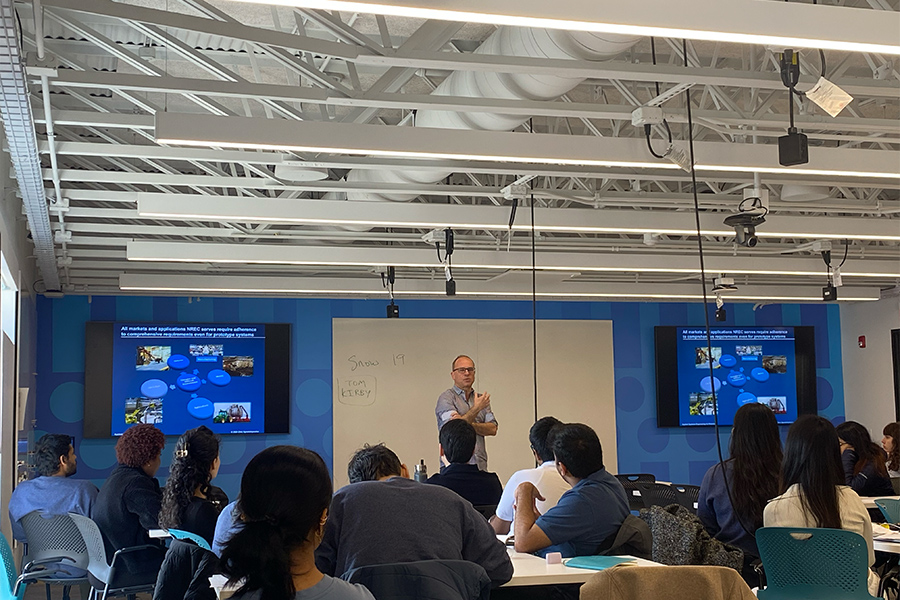
Dimi Apostolopoulos, Senior Systems Scientist at the Robotics Institute of Carnegie Mellon University and the National Robotics Engineering Center (NREC) visited the MIIPS seminar to discuss “Applied Systems Engineering for Robotics: Creating and maturing high-performance systems in a University R&D center.”
Dimi began his talk by sharing a few of the many different robots created at NREC, including robots for autonomous mapping and remote inspection - the main focus for the rest of the seminar.
Dimi explained how using a systems engineering approach helps NREC to focus on high technology readiness and maturity of their projects. He elaborated that since there are many multidisciplinary teams at NREC, systems engineering is imperative since there are many complex constructs of hardware and software being created in tandem.
Before elaborating further on how NREC uses systems engineering, Dimi connected the topic back to the MIIPS program, sharing that the process of systems engineering helps break down a single system, creating a functional perspective that can be applied to other fields (like business and design) and not just engineering. As many MIIPS students must work alongside each other on teams throughout their degree program, engaging with the thought processes of peers from different backgrounds from one’s own is crucial to creating solutions.
The rest of the seminar discussed the V-Model that NREC uses for systems engineering. This model helped the team to create a robot for a mining operation in South Africa through multiple steps including clearly defined requirements, user interviews, detailed designs, and validation testing to create the final product: a robot that can work alongside miners in extremely tight spaces to map out data at a much faster (and safer) pace.
